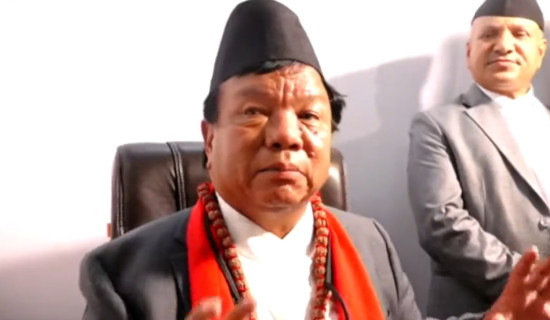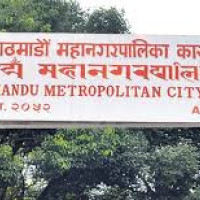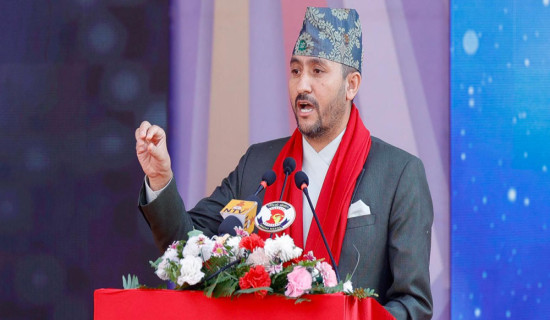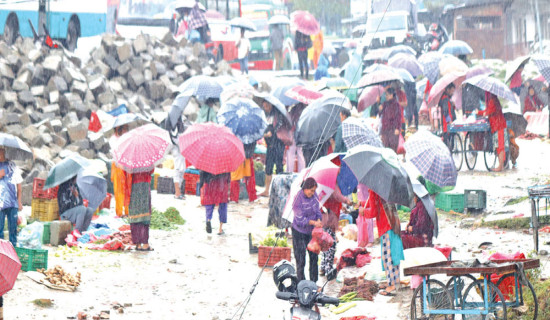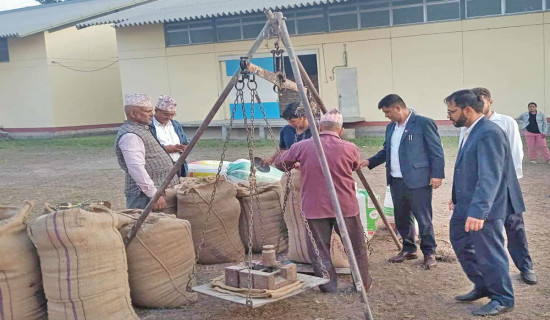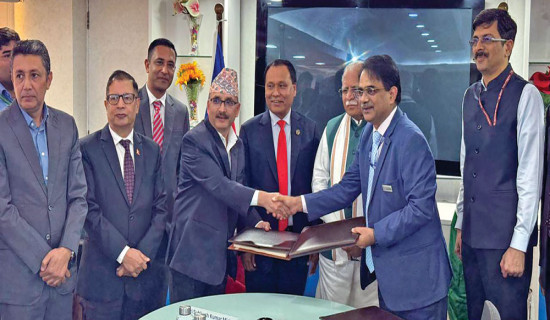- Sunday, 9 November 2025
Nepal observing National Paddy Day tomorrow
Kathmandu, June 28: The 22nd National Paddy Day and Paddy Plantation Festival is being marked nationwide on Sunday with the theme ‘Intensification in Rice Crops: Food Security and Self-Reliance’.
The celebrations aim at promoting sustainable rice production, modernising farming practices and adopting climate-resilient technologies, as the country grapples with a rice deficit of around 1 million tonnes.
Nepal has been celebrating Asar 15 as National Paddy Day since 2005 as per a minister-level decision of December 14, 2004, to recognise the economic, social, cultural, and religious importance of rice.
Prakash Kumar Sanjel, Director General at the Department of Agriculture, Ministry of Agriculture and Livestock Development, said that the message of this year's National Paddy Day is to reduce the global negative impacts of climate change by researching and developing climate-adapted technologies in rice cultivation, promoting the available technologies, making farmers and other stakeholders aware of climate change impact and increasing production and productivity.
The national level paddy plantation day will be marked at Khumaltar, Lalitpur, in the participation of stakeholders and Minister for Agriculture and Livestock Development Ramnath Adhikari. Although an agrarian country, Nepal imports a huge amount of rice as well as paddy seeds. In recent years, efforts are being made to increase paddy production, but they have not yielded the desired results.
Hybrid rice varieties are also being developed. Programmes are being implemented at all three levels of government to ensure the availability of seeds of the rice varieties, said Sanjel.
As of now, more than 140 varieties of rice have been registered by the Nepal Agricultural Research Council.
Paddy, rice worth Rs. 39 billion imported in 11 months
Despite the government's effort to make the country self-reliant in rice, the import of paddy and rice has been increasing over the years.
In the current fiscal year 2024/25, rice cultivation was carried out on an area of 1.42 million hectares of land, and 5.955 million tonnes of rice, both summer and chaite, was produced in total. The average productivity was 4.19 tonnes per hectare.
He said that although in the fiscal year 2024/25, the rice plantation area fell by 1.28 per cent compared to the plantation area in the fiscal year 2023/24, the highest average productivity was achieved with an increase by 4.04 per cent compared to the previous fiscal year.
Out of the approximately 7 million tonnes of rice required for the country, there is a shortage of about 1 million tonnes, he said. By mid-June 2025 of current fiscal year, 753,000 tonnes of rice, paddy and paddy seeds worth Rs. 38.94 billion were imported.
Sanjel said that despite Nepal’s efforts to increase domestic rice production, the country imports rice every year. “Our dependence on rice remains high, especially for fine and aromatic varieties that are not widely produced locally,” he said.
To make Nepal self-reliant in rice, productivity of paddy by using technology is essential.
"The budget statement for the upcoming fiscal year 2025/26 also mentioned the issue of making the country self-reliant in rice in the next two years. In the coming years, the ministry will prioritise the expansion of chaite paddy cultivation area and the implementation of productivity improvement programmes in wet rice," he said.
It is possible to expand area of chaite paddy cultivation to 200,000 hectares of land from the existing 110,000 hectares, he said. He said that the government would focus on providing fertilisers, quality seeds and the latest research-based technologies to farmers.
The chaite rice promotion programme is being implemented in 58 municipalities of 18 districts through federal fiscal transfer next fiscal year. Likewise, provincial bodies will also implement various programmes for rice promotion from their own resources, he said.
Programmes are being implemented to develop the entire value chain of rice through 21 rice zones and five superzones operated under the Prime Minister's Agriculture
Modernisation Project.
About 15.6% plantation complete
Meanwhile, paddy plantation has completed in around 15.6 per cent of the country’s total paddy field so far.
According to the Department, paddy has been planted in 15.6 per cent (217,289 hectares) of the total paddy field (1.4 million hectares)
across the country.
According to the Department, paddy has been planted in 45.5 per cent (80,128 hectares) of the total paddy field in Sudurpashchim Province, 39.1 per cent (16,000 hectares) in Karnali Province, 20.5 per cent (24,743 hectares) in Bagmati Province and 9.7 per cent (29,251 hectares) in
Lumbini Province.
Likewise, 13.8 per cent (12,990 hectares) paddy plantation has been completed in Gandaki Province, 14.3 per cent (39,390 hectares) in Koshi Province and 3.9 per cent (14,785 hectares) in Madhes Province.
According to Department, the actual paddy plantation data has not been received from Madhes Province.



